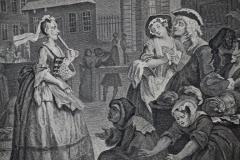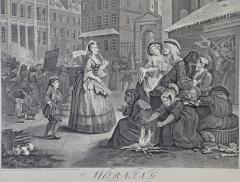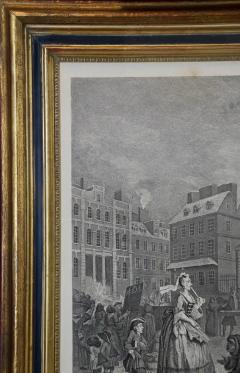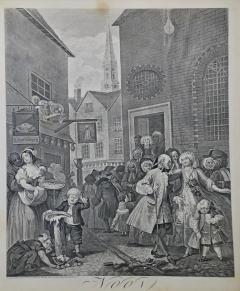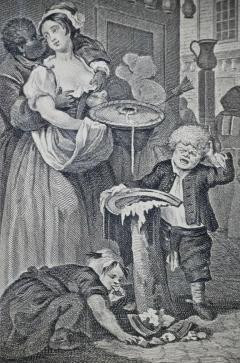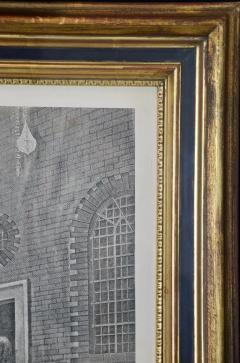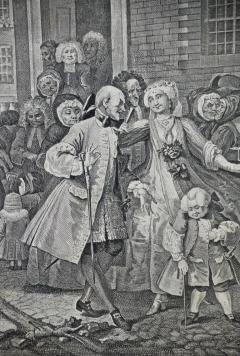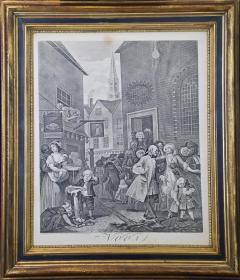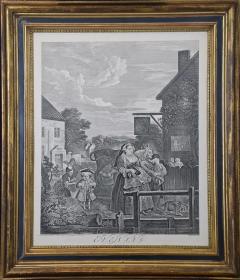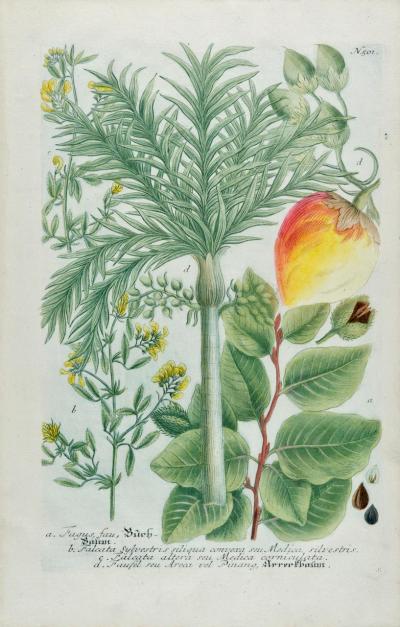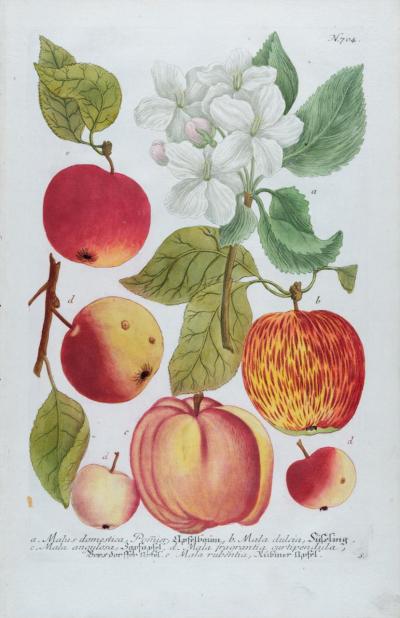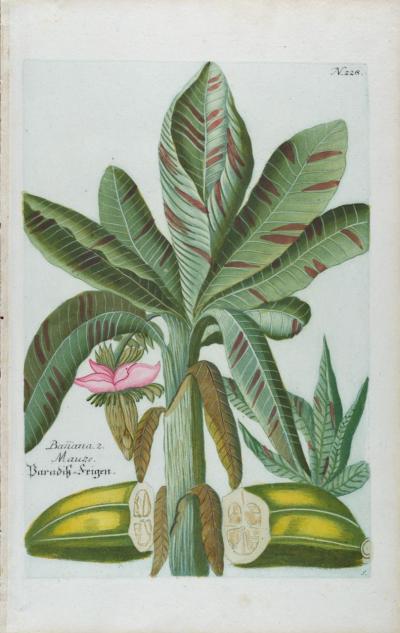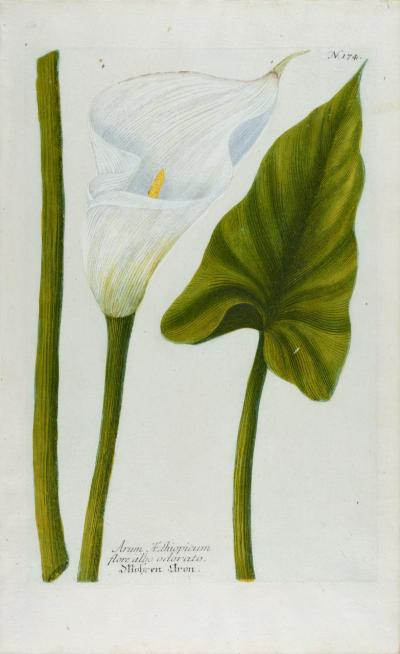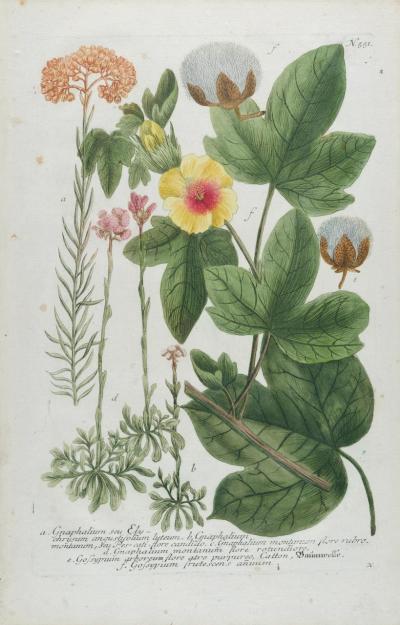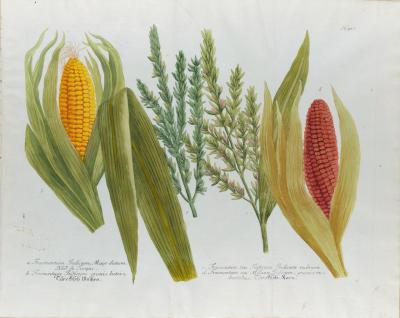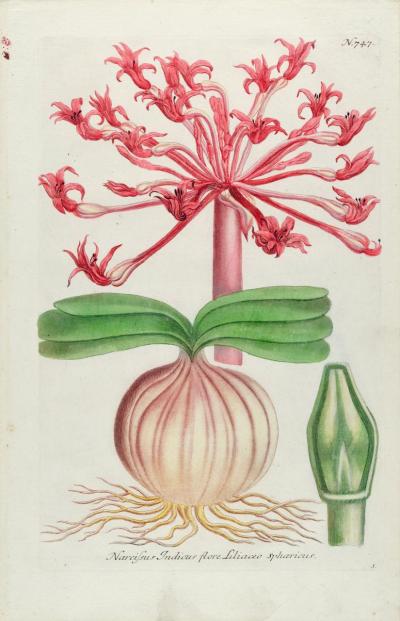Listings / Fine Art / Prints / Figurative
William Hogarth's "Four Times of the Day": Series of Four Framed Engravings
-
Description
The four plates in this "Four Times of the Day" set were created utilizing both engraving and etching techniques by William Hogarth in 1738. Hogarth's original copper plates were refurbished where needed by James Heath and these engravings were republished in London in 1822 by Braddock, Cradock & Joy. This was the last time Hogarth's original copper plates were used for printing. Most were melted down during World War I for the construction of bombs. Printed upon early nineteenth century wove paper and with large, full margins as published by William Heath in 1822. The inscription below each print reads "Invented Painted & Engraved by Wm. Hogarth & Publish'd March 25. 1738 according to Act of Parliament".
These large folio sized "Four Times of the Day" engravings/etchings are presented in complex gold-colored wood frames with black bands and scalloped gold inner trim. A majority of each thick impressive frame is covered with glass applied near the outer edge. Each frame measures 25.75" x 22.25" x 1.88".
There are a few small dents in the edge of these frames, which are otherwise in very good condition. "Morning" has two focal areas of discoloration in the upper margin and some discoloration in the right margin, a short tear in the left margin and a short tear or crease in the right margin. "Noon" has a spot in the upper margin that extends into the upper image, but it is otherwise in very good condition. "Evening" has a faint spot in the upper margin, but it is otherwise in very good condition. "Night" is in excellent condition.
The "Four Times of the Day" series is in the collection of many major museums, including: The British Museum, The Metropolitan Museum of Art, The Tate Museum, The Chicago Art Institute and The Victoria and Albert Museum.
Through this series Hogarth is portraying early 18th century London street life at "Four Times of the Day". His characters are exhibiting their personalities, quircks, strange activities, but he also wants to draw attention the disparities between the wealthy aristocracy and the common working class.
Plate 1, "Morning" depicts morning in Covent Garden in the winter in front of Tom King's Coffee House, where a fight has broken out in the doorway and someone's wig flies through the air. Vegetable and fruit vendors are setting up their display for the morning market, while two aristocratic men are fondling and kissing young market girls behind them. They are observed by a well-dressed elderly woman, who is heading to St. Paul's for church services. Her obviously very cold page boy follows her carrying her prayer book. The woman is ignoring a woman begging for a donation. In the upper right a clock above St. Paul's shows that is almost 7:00 AM. A small statue above the clock depicts Father Time with a scythe and an hourglass. Below the clock are the words "Sic Transit Gloria Mundi" (Thus passes the Glory of the World). In the lower left two children watch a woman carry a loaded basket of vegetables on her head on her way to sell them in the market.
Plate 2, "Noon" is thought to represent the dichotomy between the lives of the 18th century English working classes and that of the aristocracy. People exiting a French Huguenot church in the Soho region on the right are the wealthy and aristocracy, as well as the clergy. An aristocratic man, woman and child are showing off their elevated status with their dress and carriage. The man and even the child are carrying fashionable canes and a child seen from the rear is wearing extremely expensive clothing and a head covering resembling a beehive. The working class are seen on the left in the street in front of a restaurant with a sign "Good Eating" and a tavern called "Good Woman". A woman leaning out of a window on the second floor is arguing with a man over a plate of food and has spilled her food into the street below. A footman is fondling a servant girl from behind. She is carrying a tray, which may have contained a plate which has fallen off onto a young boy's head. He is rubbing his head and crying because his plate carrying a pie has broken and the pie has fallen to the street, where a young street urchin girl is eating it the remnants. No one pays attention to a dead cat which lies in the middle of the street. Life on both sides of the street seems to have its problems. The clock on the tower of St. Giles-in-the-Fields in the background reads 11:30 or 11:45, almost Noon.
Plate 3, "Evening" depicts Islington is the northern edge of London, a popular amusement center for London's middle class. Unlike the crowded London city streets, here we see expansive sky and rolling hills in the background with an evening sunset, probably in summer. Sadlers Wells Theater on the left was belittled at the time for attracting tradesmen and domineering snobbish wives. In the foreground is a large, possibly pregnant woman who is walking next to her husband who looks unhappy, meek, presumably brow-beaten. A cow is being milked behind them. The horns of the animal are projected over the man's head, presumably symbolizing his lowly family stature. Even the dog walking in front, hanging his head and appearing downtrodden. On the left a girl scolds a boy who is crying, presumably mimicking their parent's relationship. A pub is seen on the right with people enjoying the evening and in an outdoor seating area.
Plate 4, "Night" depicts a side street in Charing Cross. Night deals with the miseries of London life. Two pubs are seen on this small street, the Earl of Cardigan on the left and the Rummer Tavern on the right. These were both Freemason Lodges in the 1730's when the print was composed by Hogarth. To the left, a drunken barber-dentist has just cut his customer. Bowls of blood from earlier patients lie on a ledge outside the window. Homeless people are huddled together for warmth under the ledge. In the foreground a drunken man and a woman stumble down the street. Blood on their heads suggests a recent bar fight. The contents of a chamber pot fall on them from a window above them. He is thought to represent Sir Thomas de Veil, a magistrate who was well known at the time for the severity of his sentencing, in particular for gin-sellers. Ironically, he is too drunk to notice the chaos around him. On the right the 'Salisbury Flying Coach' has overturned next to a bonfire. People are trying to get out, while someone inside has fired their gun. Everything on the street seems in chaos, with the exception of man, possibly a tavern or inn keeper, who is calmly smoking a pipe while he pours the contents of a barrel into a larger barrel. The equestrian statue of Charles I by Le Sueur is seen in the background at the end of the street.
Artist: William Hogarth (1697-1764) was an English painter, printmaker, pictorial satirist, social critic, and editorial cartoonist. Hogarth's work was extremely diverse, ranging from serious realistic paintings and portraits to satire and moralistic pieces filled with symbolism. He often communicated his moral message in a series of paintings and engravings, such as: A Rake's Progress, Marriage A-la-Mode and A Harlot's Progress. He was by far the most significant English artist of his generation and inspired a movement of English caricaturists and satirists, including James Gillray (1756-1815), Thomas Rowlandson (1757-1827), Isaac Cruickshank (1764-1811) and George Cruickshank (1792-1878). His work has been studied intensely for the greater than two and a half centuries since his death with several academic scholars focusing their careers on the analysis of every element of each of his creations. -
More Information
Documentation: Signed Period: 18th Century Condition: Good. Styles / Movements: Other Incollect Reference #: 591688 -
Dimensions
W. 22.25 in; H. 25.75 in; D. 1.88 in; W. 56.52 cm; H. 65.41 cm; D. 4.78 cm;
Message from Seller:
Timeless Intaglio is an online gallery of rare and collectable antiquarian prints, maps and books. Although we specialize in all forms of vintage printed works on paper, the majority were created with the intaglio method of transferring ink from a plate, usually copper, to paper with a technique utilizing pressure generated by a press. Email us directly: rbreiman@timelessintaglio.com


















